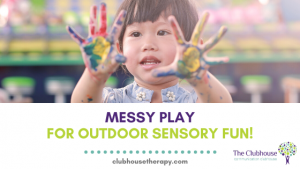4 Considerations to Help Your Child Transition to the “New Normal”
2020 has been a challenging and unexpected year for kids and adults alike. As we all strive to adapt to the circumstances brought on by the pandemic, parents may wonder how to explain these new situations to their kids. Here are a few pointers to help children understand changes to their routines and the upcoming transition back to school.
Make talking about it normal:
Time is an abstract concept for kids. It can be hard for them to understand the differences between yesterday and tomorrow, 1 week from now or 2 months from now.
Talk about it with them throughout your day. You can include them in the conversation by asking questions and sharing your own thoughts:
- “What are you most excited about doing again?”
- “Dad is most excited to go to the park again with you.”
Point out what you see driving around or talk about stories that you have heard.
- “That family looks like they are going out to eat at the restaurant.”
- “I heard some kids are taking swim lessons again.”
- “When school starts, you will see some of your friends on video and some in person.”
Prepare them ahead of time and outline expectations:
Regulations are changing and more public places are opening, but family routines will most likely still look very different.
- Explain expectations simply and clearly. Extra steps are being added when going in public places which means errands might take longer and people might look different.
- “We can go to the playground again, but some kids might not be able to play tag because we all still need to be careful of germs.”
- “We are going back to the clinic for therapy again, but Mommy can’t go inside with you.”
- Ask questions, and offer opportunities for your child to ask questions too.
- “Are you confused by what is happening?”
- “What do you want to know?”
Give yourself permission to not have all of the answers:
We are all figuring this out day by day, and sometimes there are no immediate or straightforward answers.
- Your child may have lots of questions, and it is okay to admit that you don’t know.
- “That is a good question, but I don’t know the answer. We will learn together.”
- “That is a good question, but I don’t know the answer. We will learn together.”
- It helps children to know that they are not alone in feeling confused by change.
- “I’m confused too. When I find out more, I’ll make sure I tell you too so we know together.”
Slowly reintroduce structure into your week:
Summer is still the time for fun, freedom, and play! As the start of school approaches, it can be hard for children to adjust from summer routines back to a fast-paced schedule and higher demands. For families planning to return to school in-person, a transition from e-learning to the classroom setting will also be necessary.
- In the weeks leading up to the first day, slowly adjusting kids’ bedtime routine will make it easier for them (and you!) to go to bed earlier and wake up earlier.
- Take time in the day to do structured tasks with your child such as: read a book, finish a worksheet, color, complete a craft, write in a journal, or review flashcards.
- Have a calendar easily accessible/visible. Let your child help you cross off the days so they can visualize the start of school coming up.
By: Emily Case, MOT, OTR/L


